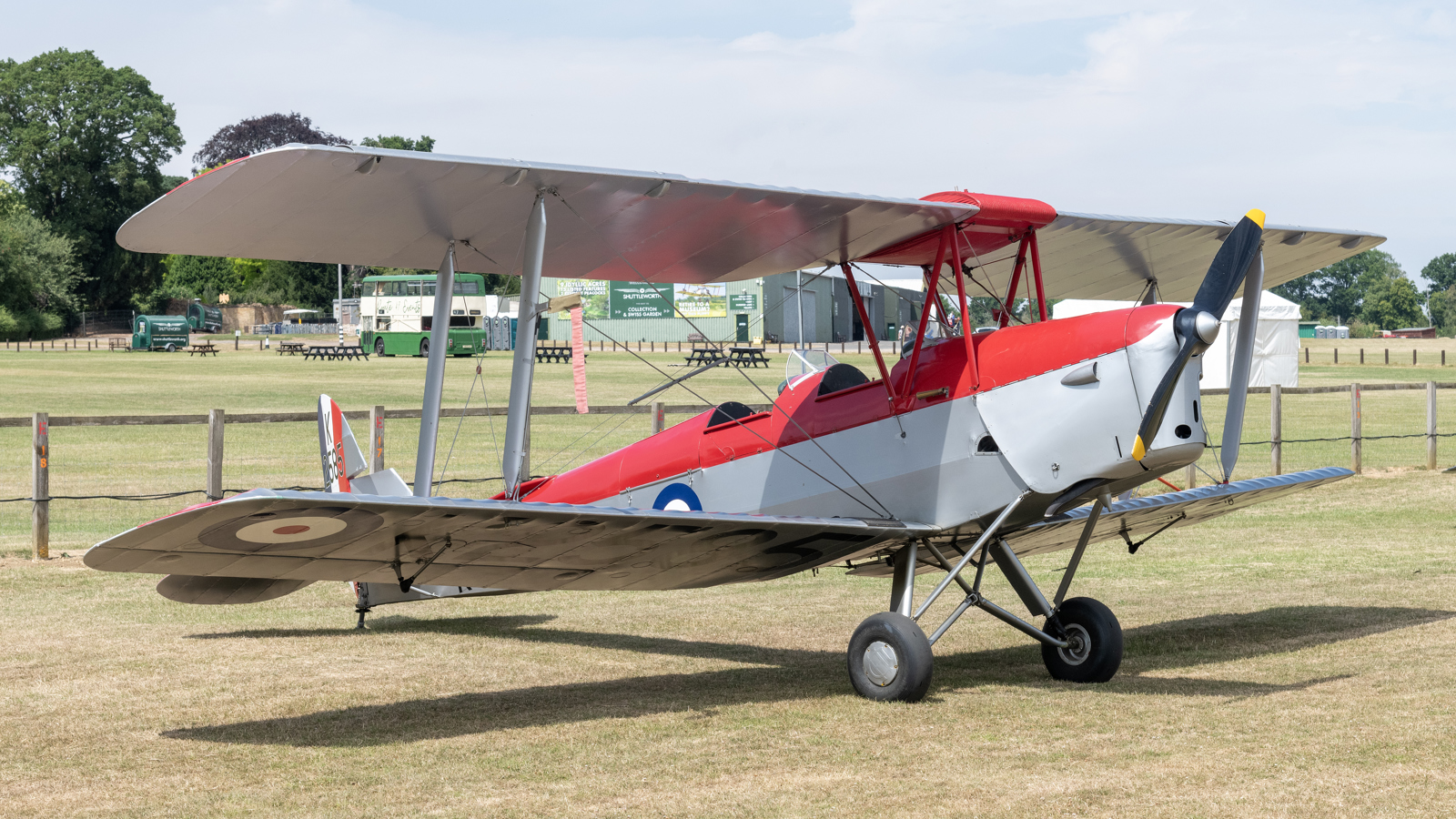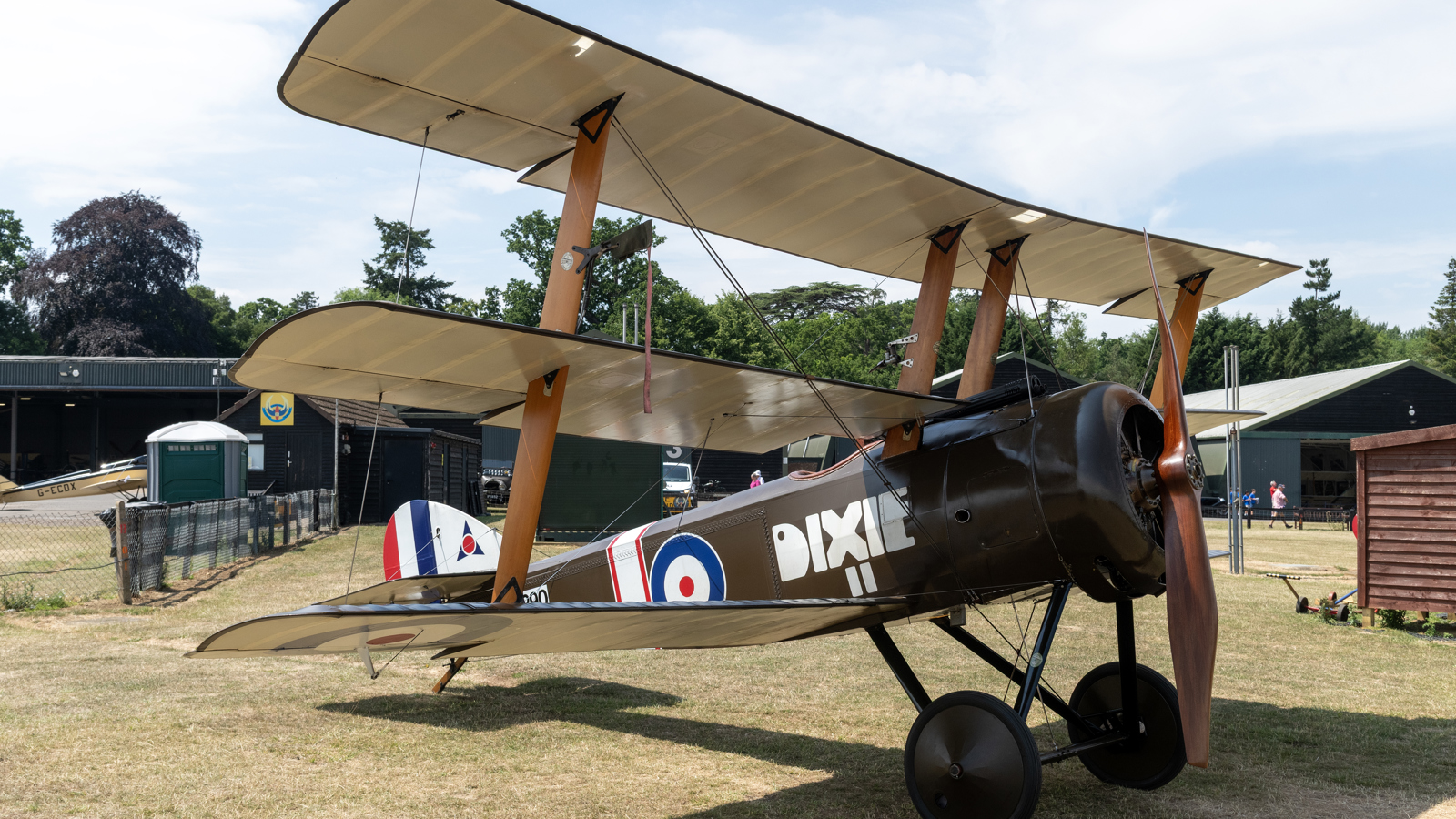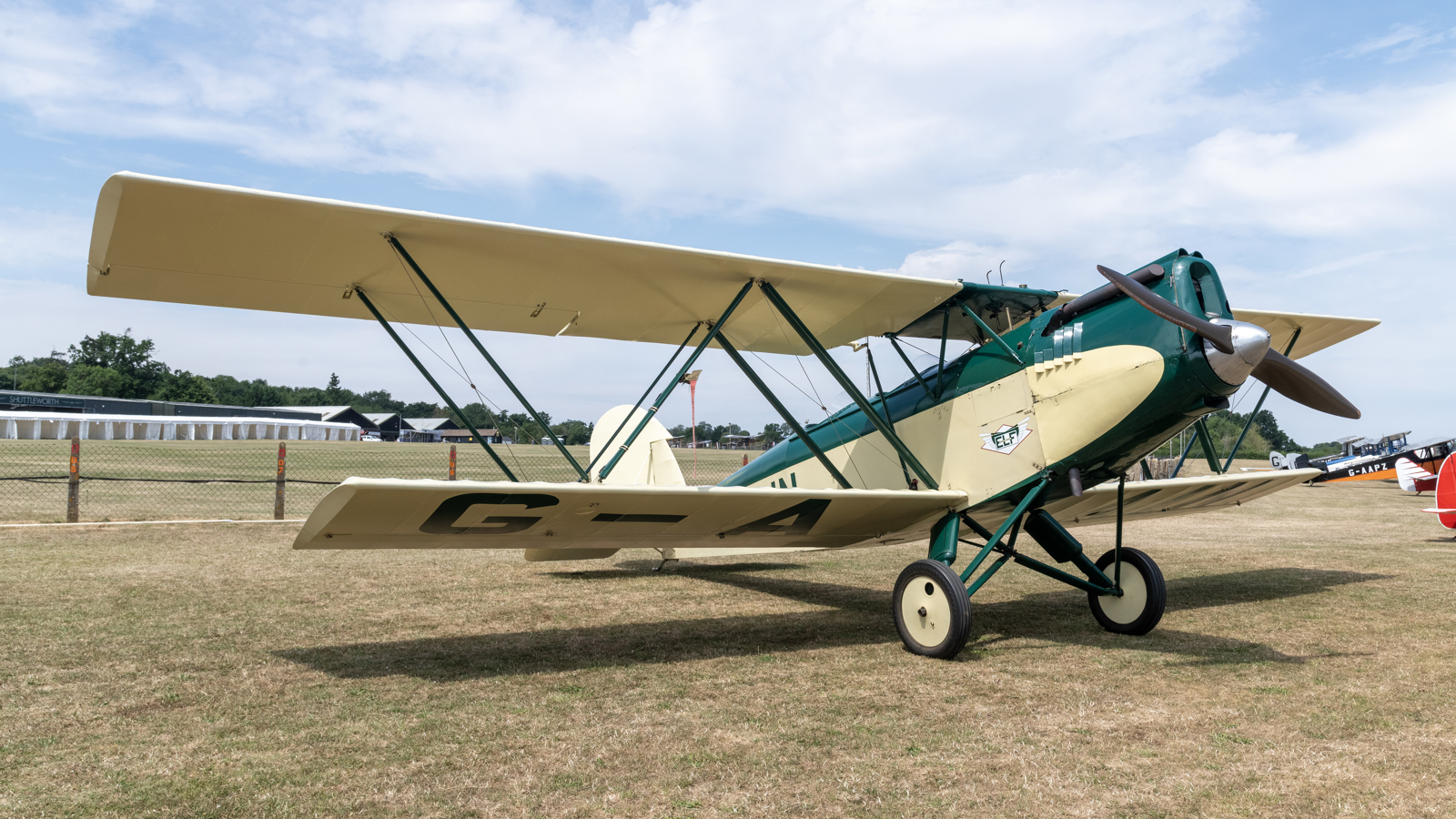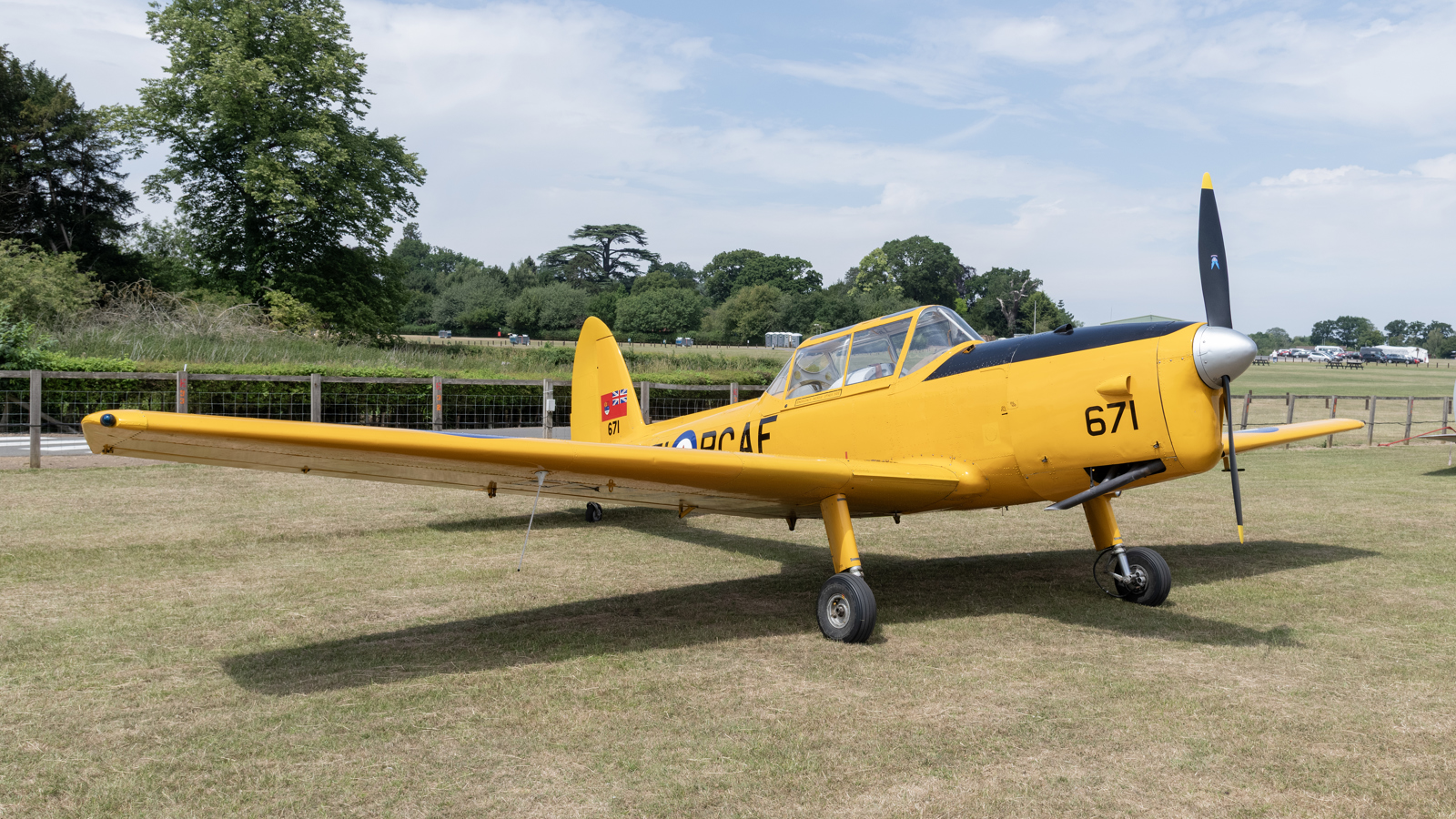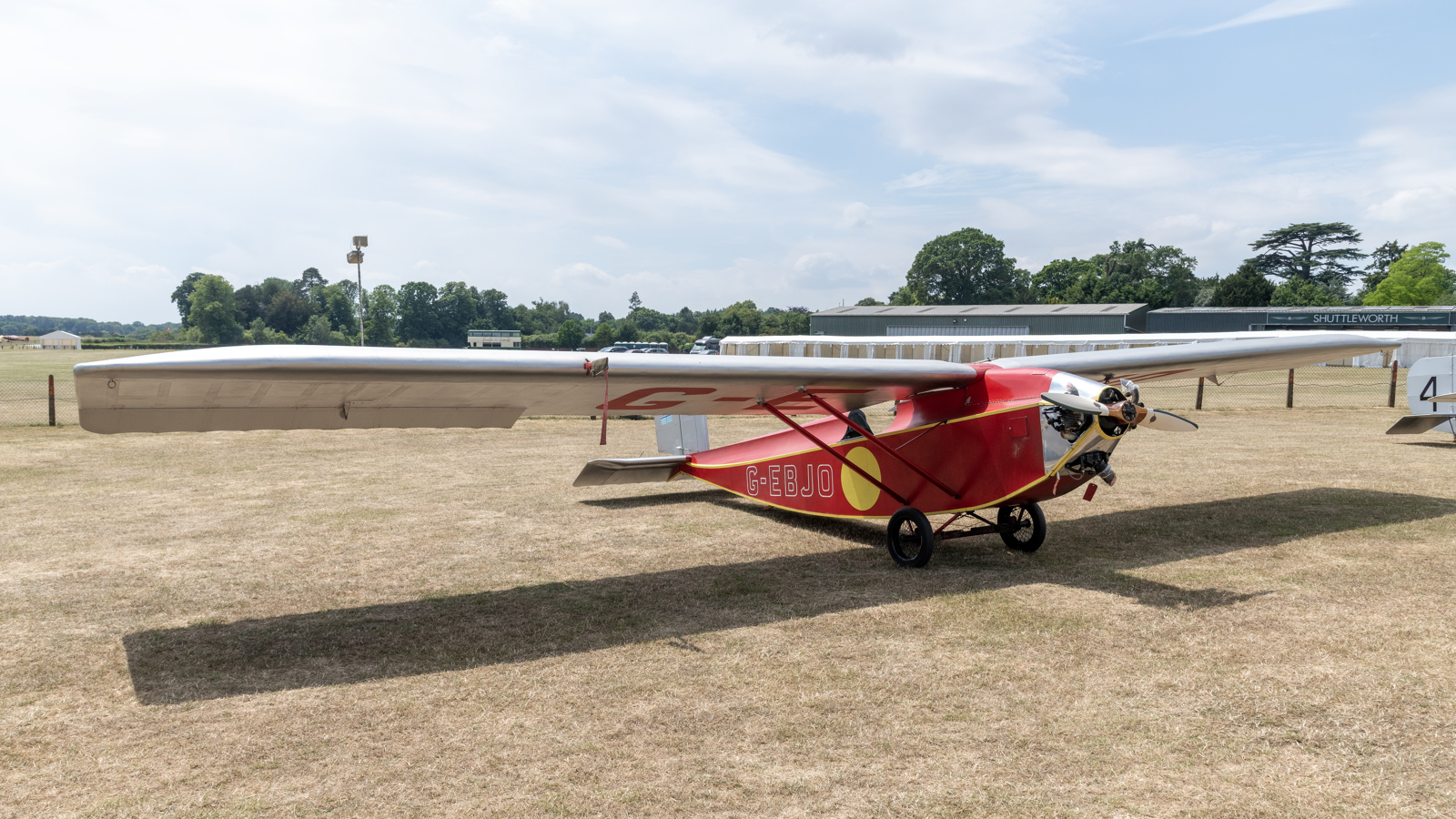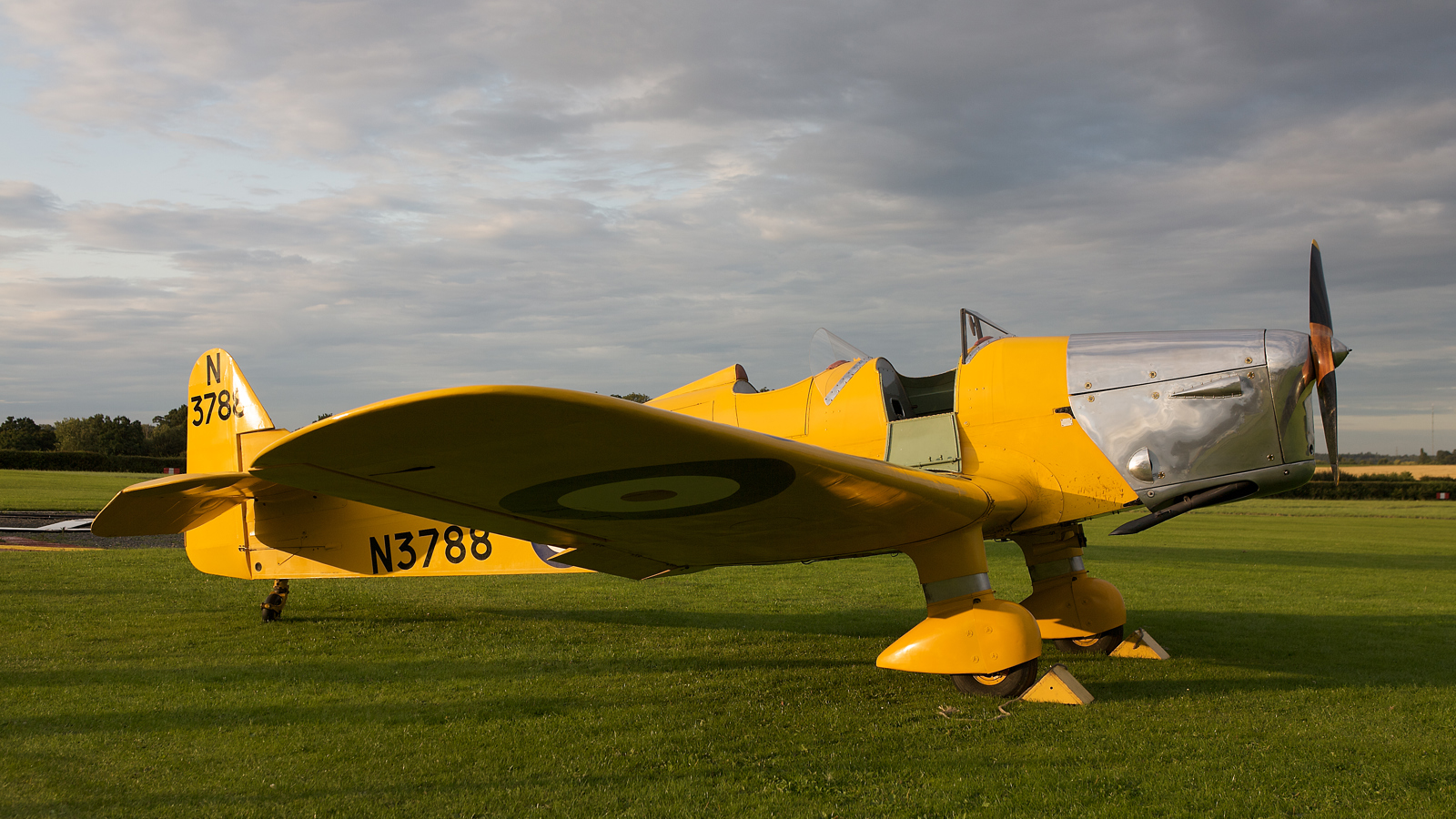Mignet HM14 ‘Pou-du-Ciel’ (Flying Flea)
The Mignet ‘Pou-du-Ciel’, literally translated as ‘sky louse’, but known in England as the ‘Flying Flea’. It is a light aeroplane designed for amateur construction by the Frenchman Henri Mignet, in an ambitious attempt to bring aviation to the man in the street.
The Pou was almost certainly the first aeroplane for which plans with a construction handbook were readily available to the aviation enthusiast to build at home. By 1937, nearly 100 Flying Fleas were registered in the UK alone, with many others in France, Germany, Italy, the USSR and the Scandinavian countries.
The outbreak of WWII meant that all amateur aircraft building came to an abrupt halt. However, although they never caught on in England, modified ‘Flea’ configuration aeroplanes are still flying successfully throughout the world to this day.
About this aircraft
The aircraft's early history remains unclear. Following WWII it remained in the care of No.120 (Southampton) Squadron of the Air Training Corps which subsequently donated the aircraft to the Collection in 1967. Here it was extensively restored by Tony Dowson, a member of the SVAS.
Specification
| Title | Detail |
|---|---|
| Type | Single seat monoplane |
| Design purpose | Civilian home-built |
| Wingspan | 20ft |
| Overall length | 12ft 10in |
| Weight | 220lbs |
| Max speed | 60mph |
| Year | 1936 |
| Manufacturer | Henri Mignet |
| Engine | 16hp Scott Squirrel |
| Engine type | 2-cylinder inline |
| Era | Interwar |
| Status | Collection owned |
| Registration | G-AEBB |
Other collection items
Register for Updates
Be the first to hear about our latest events and get all the Shuttleworth news


